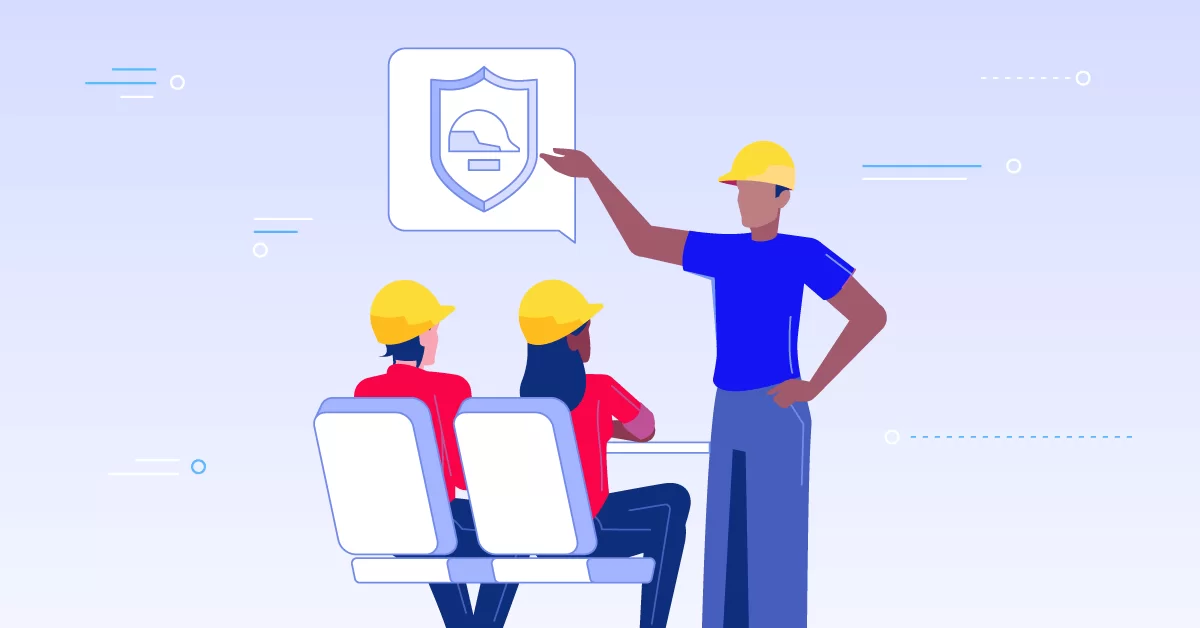Enterprises that employ a global workforce need global training and development strategies to be an integral part of the business.
Not only that, these companies also need to choose the best strategy in order to balance learning needs of their global workforce with that of the company’s specific needs and interests.
What is global training?
If you’ve worked for a multinational company, you’ve most probably heard of the term ‘global training.’ While the term itself is very self-explanatory, there is a big difference when you compare it to the usual on-site or online learning.
The differentiating factor is that your content and strategies have to be designed to cater to a much wider audience – as opposed to a specific employee group or workforce demographic.
With teams composed of workers from all over the world, your global training and development strategies have to be attuned to address the learning needs of all learners. This is the point where issues arise – designing effective training and development approaches for a diverse workforce.
There have to be specific strategies to employ if you want to effectively train your global workforce.
Issues and Challenges of Managing a Global Workforce
There are expected challenges when you train employees from different parts of the globe. While the advantages of having a diverse workforce will always trump its drawbacks, things do get ‘lost in translation’ when you employ global training and development strategies.
For example, sending a distinct message through global training and development programs can be quite a tedious task. Your learners speak different languages, come from different cultures, and live in different time zones.
There is also the obstacle of high training costs. The cost of training a global workforce will always be much higher than that of training employees locally.
Technology can also be another factor because not every region has the technological capacity to handle online courses or training materials.
But how can you overcome all the obstacles?
4 Strategies for Training Your Global Workforce
When you handle a global workforce, you need to formulate global training and development strategies to address the aforementioned challenges. In this process, there are four things that you might want to think about.
These four considerations will greatly determine your approach to global training and will also map out your priorities. Each option has its own pros and cons too. So, you might want to take a closer look at each option and examine the possible repercussions before committing to a specific strategy.
Strategy 1: Standardized Approach for ALL Topics
The first strategy is to implement one learning approach for all topics that will apply to all regions. Your course delivery and design will follow one standard method – online learning, for example. Moreover, all courses will utilize one language and will all have the same content.
This approach makes content creation easier and less costly because a team from global headquarters can take care of the entire training process. This does come at the expense of addressing the different contexts of your learners. However, when you’re working on a tight budget on a very short timeline, this option becomes the only choice – most of the time.
Strategy 2: Standardized Approach for EACH Topic
Another strategy entails using one learning approach for each topic across all regions. This means that every course is still standard across the entire enterprise – local or overseas.
Every topic though can differ in the method of delivery. This gives you more flexibility when it comes to designing courses. For example, some topics can be taken through a learning management system while others can be a mix of on-the-job learning and face to face instruction.
Taking on this strategy makes course creation less complicated as each course will be delivered in one standardized approach. The main challenge is ensuring that the same message is conveyed throughout all regions.
Always take note that there are preferred learning methodologies for every region or culture. When it comes to learning approaches, what successfully works for one region doesn’t necessarily mean it will be successful in another. Also, note that you would need to ensure that facilitators from all regions are calibrated when it comes to the delivery of the courses.
Strategy 3: Standardized Learning Objectives, Bespoke Regional Approach and Content
The third strategy is to implement one set of learning objectives using different methodologies and content for employees in all regions.
This does seem like an obvious choice. Learning objectives and required skills should come standard across the entire organization – no matter where employees are in the world.
Moreover, content should also be further customized to address specific languages and cultures.
For example, a course on Quality Compliance is dictated by global HQ. North American and Australian sites will utilize an online learning method through an LMS. The course for Southeast Asian sites, on the other hand, will be delivered through face-to-face instruction.
This approach is more time-consuming and would require a greater amount of resources to execute. Each region would need to have a dedicated team or point person whose biggest responsibility is translating the learning objectives into approaches and content that are more relevant to the learners.
Strategy 4: Bespoke Learning Objectives and Content per Region
The fourth strategy is to implement different learning goals and content in all regions – with direction from global HQ’s training and development team.
This means that every course is customized to suit a specific need of a target audience or region. From the learning objectives, to the approach and content, everything will be tailor-fit to the learners. The global training team would take on more of an ‘auditor’ role – ensuring that learning objectives, approaches, and content still fit into the organization’s requirements.
While this is another very obvious choice, this option requires a tremendous amount of collaboration between teams separated by geographical differences. To add, a lot of effort is required to pull this off – with most of the time and resources usually spent in the back-and-forth between the local and HQ training teams.
Another dilemma is giving complete autonomy to your regional learning teams. Since most topics will be dependent on a region’s learning needs, each region can, therefore, have its own collection of courses. Global headquarters might find it challenging to keep track of everything that’s going on.
Is online learning the answer to implementing effective global training and development strategies?
We’ve emphasized how online learning through an LMS can be one of the instructional methods for a global workforce. However, is it the answer to making your training and developing your global workforce more effective?
No and yes. No because an LMS is not a ‘magic pill.’ But also yes, because having an LMS can make things easier.
For example, getting an LMS can produce tremendous savings on training costs. Instead of sending trainers (or learners) all across the globe, you can move all your training online. When it comes to global training and development strategies, an LMS solves issues on location, time, and even language.
An LMS solves issues on location, time, and even language.Share on
Having an LMS for also allows you to scale your courses. You get to reach more people with less cost, effort, and resources as compared to traditional face-to-face training. Moreover, an LMS will also allow you to track training completion, issue certifications, and manage your learners easier.
Having an LMS does not guarantee that you get to address each of your global learners’ needs nor does it promise to make your courses more effective.
What it does give you, though, is an advantage by providing a medium to easily reach out to your global audience. That, in itself, is already taking a great, big step, in the right direction when it comes to training and developing your global workforce.
Conclusion
Unfortunately, there is no silver bullet when it comes to global training.
So, when you choose a global training strategy to implement, always remember to put three big things into consideration: your resources, your learners, and the role of your global training team. Your strategy needs to balance these three aspects to ensure that you get the most out of your global training and development programs.
Are you looking to train your global workforce with a robust LMS? Schedule a demo now to explore your options with eFront.


